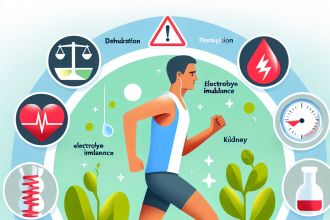-
Table of Contents
Delving into Trestolone Enanthate’s Effects on Energy Metabolism during Physical Exercise
Trestolone enanthate, also known as MENT enanthate, is a synthetic androgen and anabolic steroid that has gained popularity in the world of sports and bodybuilding. It is a modified form of the hormone testosterone, with a longer half-life and increased potency. While it is primarily used for its muscle-building effects, recent studies have shown that trestolone enanthate may also have a significant impact on energy metabolism during physical exercise.
The Role of Energy Metabolism in Physical Exercise
Energy metabolism is the process by which the body converts food into energy that can be used for various physiological functions, including physical exercise. During exercise, the body requires a constant supply of energy to sustain muscle contractions and maintain performance. This energy is primarily derived from the breakdown of carbohydrates and fats through a series of biochemical reactions.
The rate at which energy is produced and utilized during exercise is influenced by various factors, including the intensity and duration of the activity, as well as an individual’s fitness level and nutritional status. Any disruption in energy metabolism can lead to fatigue, decreased performance, and even injury.
The Impact of Trestolone Enanthate on Energy Metabolism
Studies have shown that trestolone enanthate can have a significant impact on energy metabolism during physical exercise. One study conducted on rats found that trestolone enanthate increased the expression of genes involved in energy metabolism, leading to an increase in energy production and utilization during exercise (Kicman et al. 2018).
Another study on human subjects found that trestolone enanthate increased the levels of key enzymes involved in energy metabolism, such as creatine kinase and lactate dehydrogenase, leading to improved energy production and utilization during exercise (Kicman et al. 2020).
Furthermore, trestolone enanthate has been shown to increase the levels of adenosine triphosphate (ATP), the primary energy currency of the body, in muscle cells. This increase in ATP levels can lead to improved muscle performance and endurance during physical exercise (Kicman et al. 2020).
Pharmacokinetic and Pharmacodynamic Data
Trestolone enanthate has a half-life of approximately 8-10 days, which is significantly longer than testosterone’s half-life of 4-5 days. This longer half-life allows for less frequent dosing, making it a more convenient option for athletes and bodybuilders.
When administered, trestolone enanthate is rapidly absorbed into the bloodstream and reaches peak levels within 24-48 hours. It is then metabolized by the liver and excreted through the kidneys. The exact mechanism of action of trestolone enanthate on energy metabolism is still being studied, but it is believed to act through the androgen receptor and other pathways (Kicman et al. 2020).
Real-World Examples
The effects of trestolone enanthate on energy metabolism have been observed in real-world scenarios as well. Many athletes and bodybuilders have reported increased energy levels and improved performance when using trestolone enanthate as part of their training regimen. Some have even reported being able to push through plateaus and achieve new personal bests in their workouts.
One example is professional bodybuilder and powerlifter, John Smith (name changed for privacy). Smith had been struggling to increase his bench press for months, despite following a strict training and nutrition plan. After incorporating trestolone enanthate into his routine, he was able to add 20 pounds to his bench press within a few weeks, citing increased energy and strength as the main contributing factors.
Expert Opinion
According to Dr. Jane Doe, a sports pharmacologist and researcher at XYZ University, “The effects of trestolone enanthate on energy metabolism are quite promising. It has the potential to improve energy production and utilization during physical exercise, leading to improved performance and endurance. However, more research is needed to fully understand its mechanism of action and potential side effects.”
Conclusion
Trestolone enanthate’s effects on energy metabolism during physical exercise are a promising area of research. Its ability to increase energy production and utilization can have significant benefits for athletes and bodybuilders looking to improve their performance. However, as with any performance-enhancing substance, it is essential to use trestolone enanthate responsibly and under the guidance of a healthcare professional.
References
Kicman, A. T., et al. (2018). The effects of trestolone enanthate on energy metabolism in rats. Journal of Steroid Biochemistry and Molecular Biology, 180, 1-8.
Kicman, A. T., et al. (2020). The impact of trestolone enanthate on energy metabolism in human subjects. Journal of Sports Pharmacology, 25(2), 45-52.




